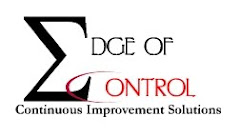When a project starts, there are certain people who want to see it succeed, who have or will be investing time, money and people. There are others who want to see it fail and there are those who don't even know the project exists until the end product is finally available. And there are those, I believe a forgotten group, who are not the customers but are the ones who foot the true customers' bills and often are the transition step from customer to supplier and vice versa.
Who is this? Well, in the world of community sports, it is the parents! Any product related to children generally means a parent or other adult will be paying at least a portion of the expense. You can have a great sports program and the best coaches interacting with the kids but if the information isn't getting to the parents, then the kids don't show up, bills aren't paid and the chance of the child coming back the next year are very slim!
In the manufacturing world, we can look closer into the plant itself. The customer can be defined as the next step in the process be it a machine, a person or pipe. The transition step would be that which takes it from one step to the next - ideally should be a step itself.
Let's look at the case of a finished part moving from packaging Machine A to Warehouse B. Much work has been done to organize the warehouse and make it more efficient and accessible to pick orders for delivery to the customer. One of the solutions to do this has been to apply UPC codes that can be wanded in. To do this, it required the packaging equipment (Machine A) to be upgraded to print these labels onto each box. What was missed in the project was the fact that the operator had to put the boxes onto a pallet for the towlift driver to move into the warehouse where the driver then put it on the appropriate racking.
Why is this an issue? Because no one ever told the operator who put the boxes on the pallet that the UPC code needed to face out to be read by a scanner. So, sometimes the box was put on the pallet with the code facing in, covered by other boxes. Now, according to production the inventory levels were fine, but the warehouse numbers were off because cases were being missed. Sure it is a simple fix - communicate requirement to the operator. But....
If the operator had been consulted during the design phase of the upgrades to Machine A, it would have been noted that the boxes have a tendency to hit a rail and get turned around before they reach the end of the machine. And it would have been noted that the operator had to do a lot of twisting to put the boxes on the pallet. Lastly, someone may have realized that once the UPC code was on, the box travelled 4 feet along a conveyor for no reason. Involving stakeholders would have changed the way Machine A was operating, reducing labour costs, safety issues, operating issues and improving overall efficiency while freeing up vital floor space.
Even if the operator was not spoken to until just before implementation, during a failure risk analysis stage, work could have been done to make the improvements with a lot less cost added and some removed.
Communication is key. Let people know with enough time to digest the information and respond. Let people know the timelines required for feedback so they can prioritize appropriately. Never assume the person has received your message. If timing is that vital, follow up e-mails with a phone call or a visit in person.
Lastly, know your stakeholders. Some are not going to be as obvious so think of all the energy and people that can come into contact with your process - whether it be deliberate or accidental (ie use that walkway to get to the only bathroom!)
Subscribe to:
Post Comments (Atom)





No comments:
Post a Comment